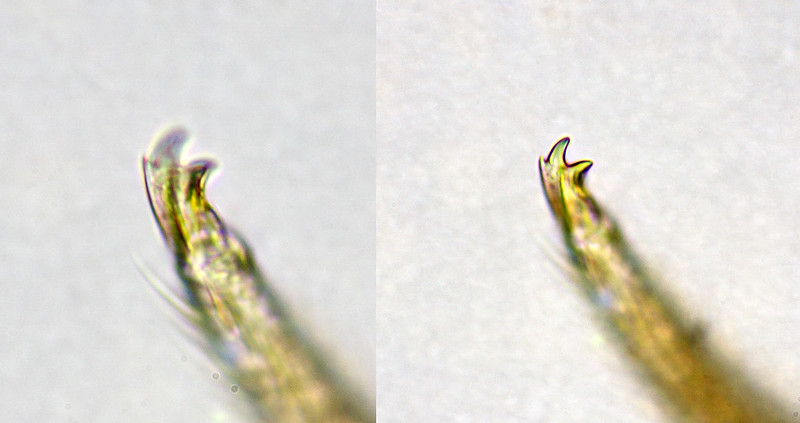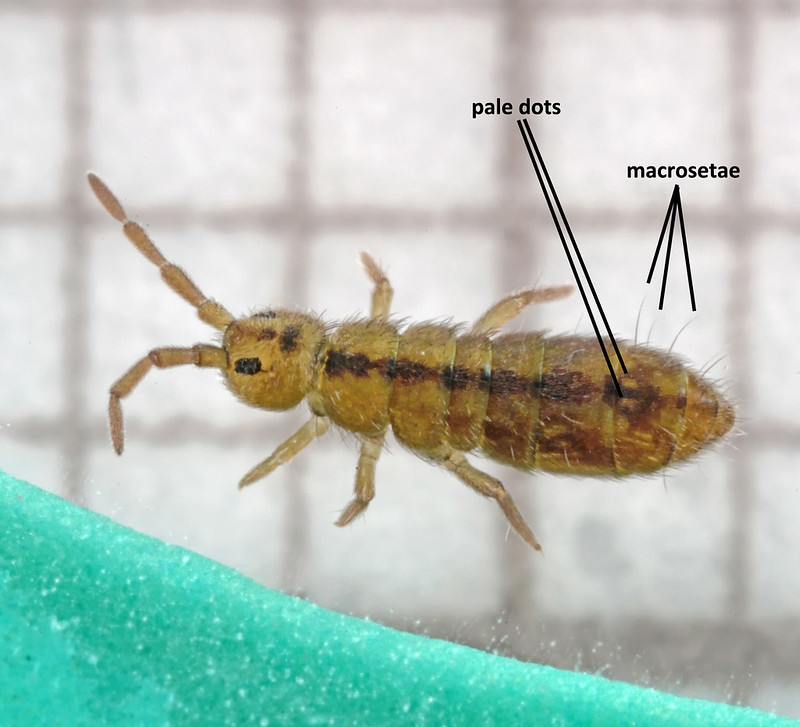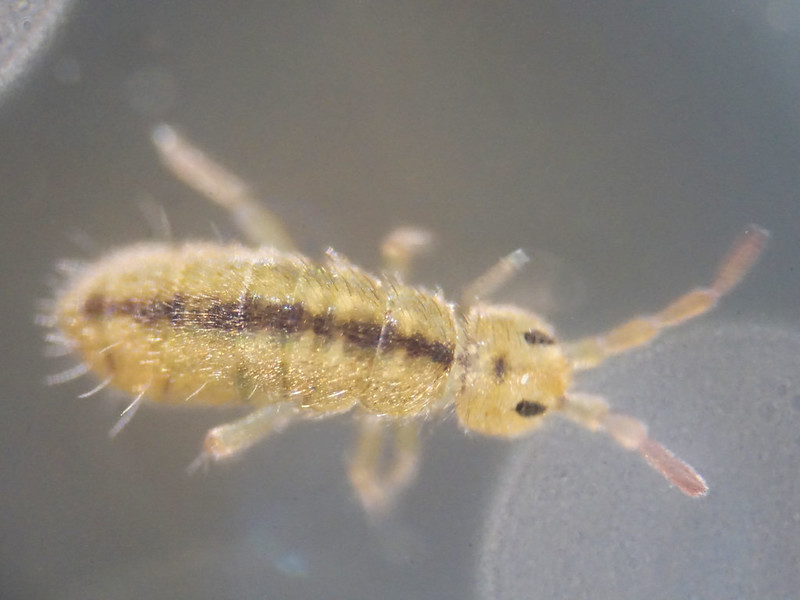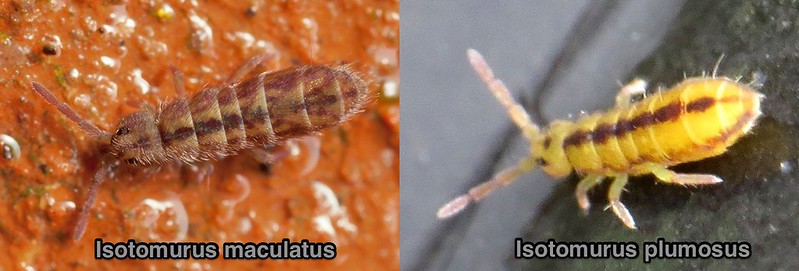- Istotoma: macrosetae on all body segments
- Isotomurus: macrosetae on last few abdominal segments only
- (Desoria: no macrosetae)
Many species in this genus were badly confused in the past and lumped together as "Isotomurus palustris". In recent years they have been separated into distinct species. Adult specimens have characteristic pigmentation patterns which makes identification easier than some other groups (juveniles are paler and often difficult to identify until they develop the characteristic patterns).
Mucro:
Desoria - mucro has four teeth but does not possess a lateral seta, apical tooth is large.
Isotoma - mucro has three teeth.
Isotomurus - mucro has four teeth, apical tooth smaller than the others:

Isotomurus palustris has a near continuous dorsal line and fainter lines on the sides of its abdomen (juveniles are paler); mucro does not have a lateral seta. Species boundaries in Isotomurus are very difficult to determine and I. palustris is best recorded as I. palustris sensu lato unless there is very strong evidence to the contrary:

Isotomurus pseudopalustris has three macrosetae in triangular configuration on sides of abd4. Dark broken dorsal midline with two characteristic pale dots either side of midline on abd4. Adults have some pigmentation on sides of abdomen, juveniles are paler:

Isotomurus unifasciatus has a continuous dark line down its midline but is otherwise uniformly pale:

Isotomurus maculatus has a distinctive dorsal pattern resembling a backward facing crown;
Isotomurus plumosus has both an unbroken dark midline and lateral stripes:

Other Identification Guides: https://collembolla.blogspot.co.uk/p/identification-guides.html
No comments:
Post a Comment
Comments welcome, I will respond as soon as I can.
Note: only a member of this blog may post a comment.